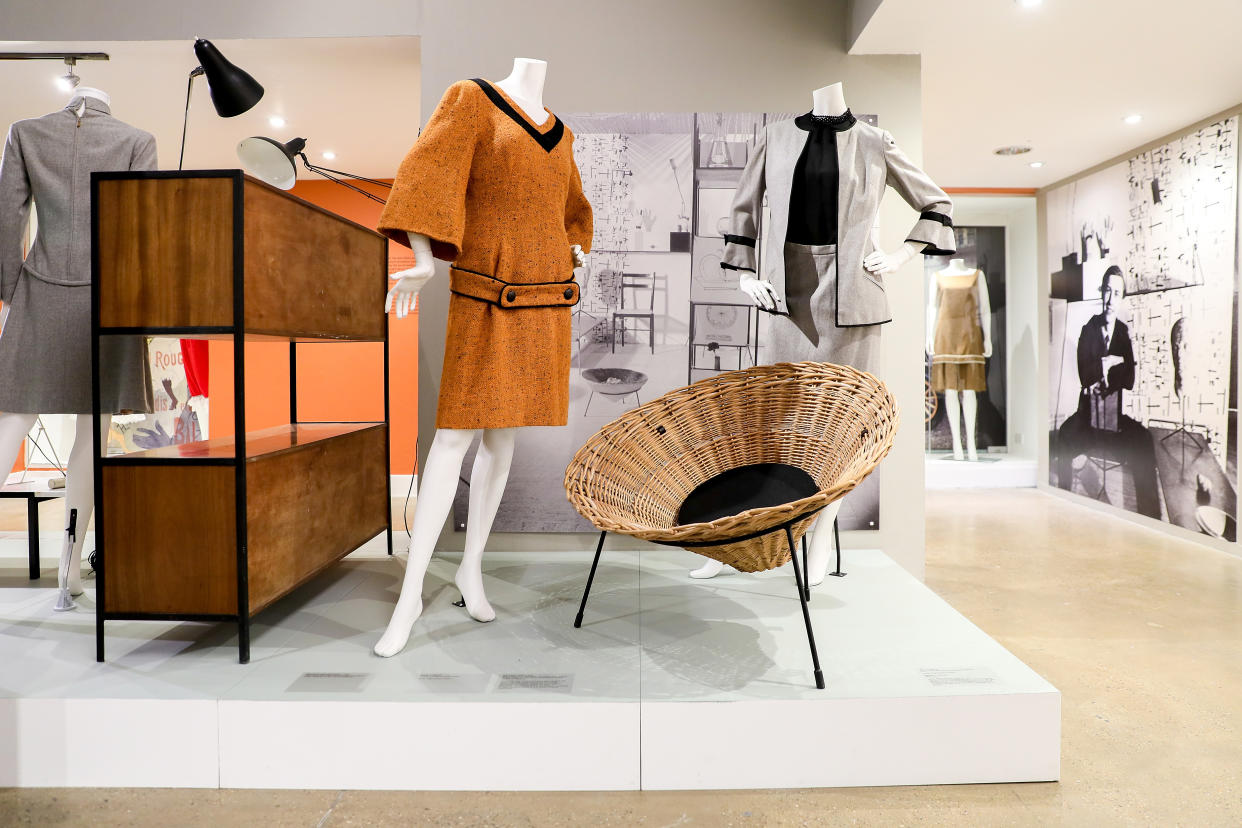London’s Fashion and Textile Museum Spotlights Mary Quant and Terence Conran

LONDON — Mary Quant and Terence Conran are at the center of the new exhibition “Swinging London: A Lifestyle Revolution” that runs until June 2 at the Fashion and Textile Museum.
The exhibition focuses on the cultural and fashion icon Quant, known for her bob hairstyle and mod fashions, and her close friend and collaborator, designer, restaurateur and retailer Conran. Their works are displayed together in lifestyle settings such as a living room and a shop.
Related stories
The Not So Swinging Thirties to Take the Spotlight in New London Show
Orla Kiely: A Life in Pattern Opens at London's Fashion & Textile Museum
The exhibition also presents textiles, fashion, design and the art of the Chelsea Set, a group of revolutionary young designers, artists, photographers, musicians, fashion models and intellectuals, whose activities centered around Kings Road in Chelsea from 1952 to 1977.
Dennis Nothdruft, head of exhibitions at the museum and curator of this exhibition, said during the press tour that the exhibition is meant to celebrate the achievements of Quant, Conran and many others who, through commercial success, brought clothes, furniture — and a modern lifestyle — into people’s lives in post-war Britain.
Displays include pieces from Quant’s legendary shop Bazaar, to a few daring fashion pieces done in PVC from the Alligator by Mary Quant line to the Banana Split minidress. They are displayed among furniture, ceramics, lighting, homeware and ephemera from the Chelsea Set, such as playful textiles from Eduardo Paolozzi and the 699 Superleggera chair designed by Italian architect Gio Ponti.
Conran’s work is a major part of the show. There are beautiful textiles, the iconic Cone Chair from the Fifties, commercially produced furniture that worked with the then-pioneering open-plan living. The innovative open-shelf display from the first Habitat shop on Fulham Road in 1960 is also featured.
On the first floor on the museum, the exhibition lays out Mary Quant’s fashion evolution. Displays range from a Space Age silver dress and PVC jacket, to psychedelic and Art Nouveau-inspired pattern jackets and a miniskirt length jacket with a ring pull zipper, something a Bond Girl would wear.
There is a wide variety of style and shape, very different from Quant’s elegant and classic work from the Fifties, which is shown on the ground floor. The PVC pieces may have been the source of inspiration for Nicolas Ghesquière’s debut collection at Louis Vuitton.
The show also features other fashion tributes: The exhibition acknowledges the debate over who created the minidress. Although Quant is known as one of the first minidress designers, she would have given credit first to Coco Chanel, Pierre Cardin and André Courrèges.
“She may not be the first, but Quant was the one that made minidress popular,” Nothdruft said.
Launch Gallery: Swinging London Exhibition at the Fashion and Textile Museum
Get more from WWD: Follow us on Twitter, Facebook, Newsletter

